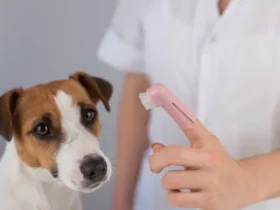Introduction
Bathing your dog during the winter can be a bit of a challenge. With colder temperatures and less humidity, you want to ensure your furry friend stays clean without risking their health. Whether your dog loves or hates bath time, winter requires a few special considerations to keep them comfortable and safe. Here are eight tips to make winter bath time a breeze.
1. Choose the Right Time of Day
Timing is everything when it comes to bathing your dog in the winter. Aim to bathe your dog during the warmest part of the day, typically in the late morning or early afternoon. This ensures your dog has plenty of time to dry off before the colder evening temperatures set in.
Why It’s Important:
Colder temperatures in the evening can make it harder for your dog to dry off completely, increasing the risk of hypothermia, especially in smaller or short-haired breeds.
Pro Tip:
Keep an eye on the weather forecast and plan bath days on milder winter days to make the experience more comfortable for your dog.
2. Use Warm Water, Not Hot
When preparing the bath, ensure the water is warm but not too hot. The ideal temperature should be comfortable to the touch, similar to what you would use for a baby’s bath.
Why It’s Important:
Hot water can dry out your dog’s skin, which is already prone to dryness during winter. Warm water is soothing and helps maintain the natural oils in your dog’s coat.
Pro Tip:
Test the water temperature on the inside of your wrist before starting the bath to make sure it’s just right.
3. Dry Your Dog Thoroughly
Drying your dog thoroughly is one of the most critical steps after a winter bath. Use a large, absorbent towel to remove as much water as possible. Follow up with a blow dryer set to a low heat setting if your dog tolerates it.
Why It’s Important:
Damp fur in cold weather can lead to chills, and in severe cases, hypothermia. Ensuring your dog is completely dry helps keep them warm and comfortable.
Pro Tip:
If your dog is nervous about the blow dryer, introduce it slowly and use treats to create a positive association.
4. Keep the Bath Area Warm
Ensure the room where you’re bathing your dog is warm and draft-free. Close any windows and doors to keep the heat in and prevent any cold air from entering.
Why It’s Important:
A warm environment helps your dog stay comfortable during and after the bath, reducing the risk of catching a chill.
Pro Tip:
Consider using a space heater to warm up the bathroom before bath time. Just make sure to place it safely out of reach from your dog.
5. Use a Moisturizing Shampoo
Winter weather can dry out your dog’s skin, leading to itchiness and discomfort. Using a moisturizing shampoo specifically designed for dogs helps to keep their skin hydrated and their coat shiny.
Why It’s Important:
Harsh shampoos can strip your dog’s skin of natural oils, which are especially important in winter to protect against dryness.
Pro Tip:
Look for shampoos with natural ingredients like oatmeal, aloe vera, and coconut oil, which are gentle and moisturizing.
6. Limit Bath Frequency
During winter, it’s advisable to limit the number of baths you give your dog. Frequent baths can strip away the natural oils that protect your dog’s skin and coat.
Why It’s Important:
Over-bathing in winter can lead to dry, flaky skin, and a dull coat. Stick to bathing your dog only when necessary, such as when they get particularly dirty or start to smell.
Pro Tip:
In between baths, use dog-safe wipes or a dry shampoo to keep your dog fresh without stripping their skin of essential oils.
7. Protect Your Dog’s Paws
Winter conditions can be tough on your dog’s paws, especially if you live in an area with snow and ice. Before and after a bath, take extra care of your dog’s paws.
Why It’s Important:
Salt, ice, and cold surfaces can cause your dog’s paw pads to crack and become painful. Proper care ensures your dog’s paws stay healthy and comfortable.
Pro Tip:
Apply a paw balm before heading out in the cold and gently wash your dog’s paws after walks to remove any harmful chemicals or ice. Dry their paws thoroughly to prevent moisture buildup.
8. Be Mindful of Your Dog’s Comfort
Above all, be mindful of your dog’s comfort throughout the entire bathing process. Some dogs may be more sensitive to the cold or may become anxious during baths, so it’s essential to keep their needs in mind.
Why It’s Important:
A comfortable dog is a happy dog. Ensuring your dog feels safe and secure during bath time helps make the experience positive for both of you.
Pro Tip:
Speak to your dog in a soothing voice, and offer treats or toys as a distraction during bath time. If your dog is particularly anxious, consider shorter, more frequent baths to help them acclimate.
Conclusion
Bathing your dog during the winter requires a bit more preparation and care, but with these tips, you can ensure your furry friend stays clean, warm, and comfortable. Remember to always prioritize your dog’s comfort and health, and winter bath time will be a stress-free experience for both of you. Happy bathing!











Leave a Reply